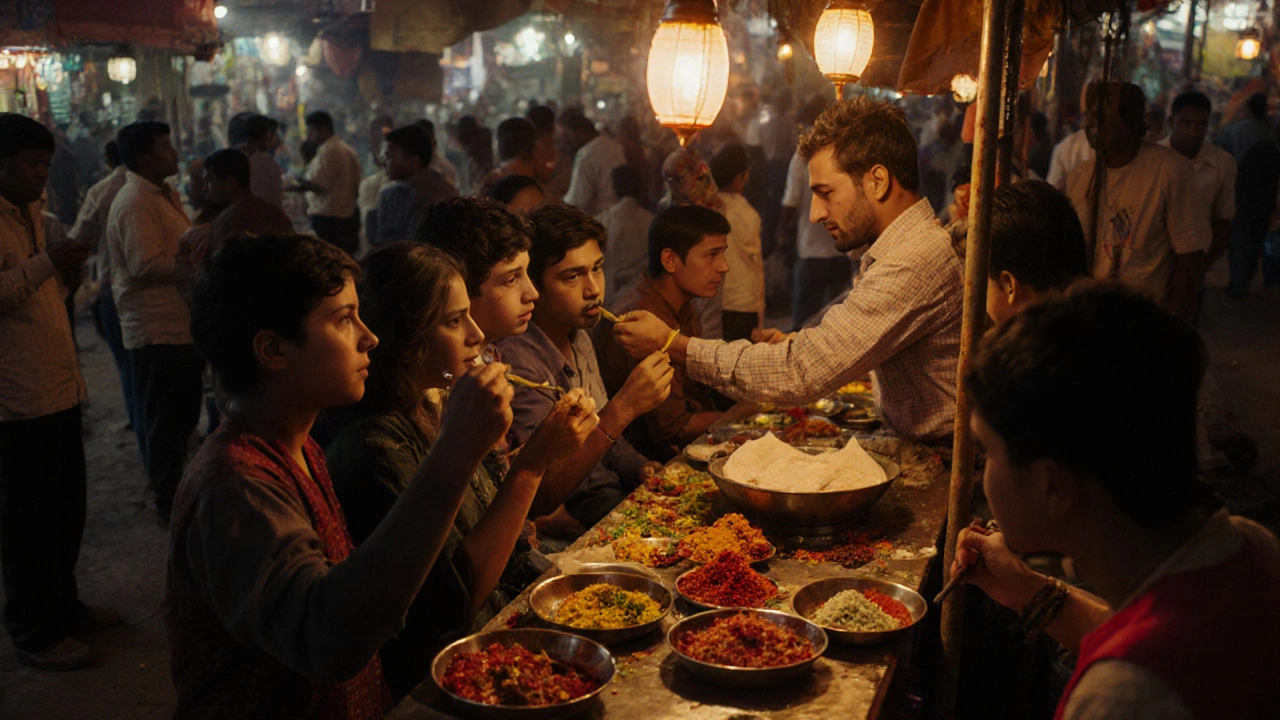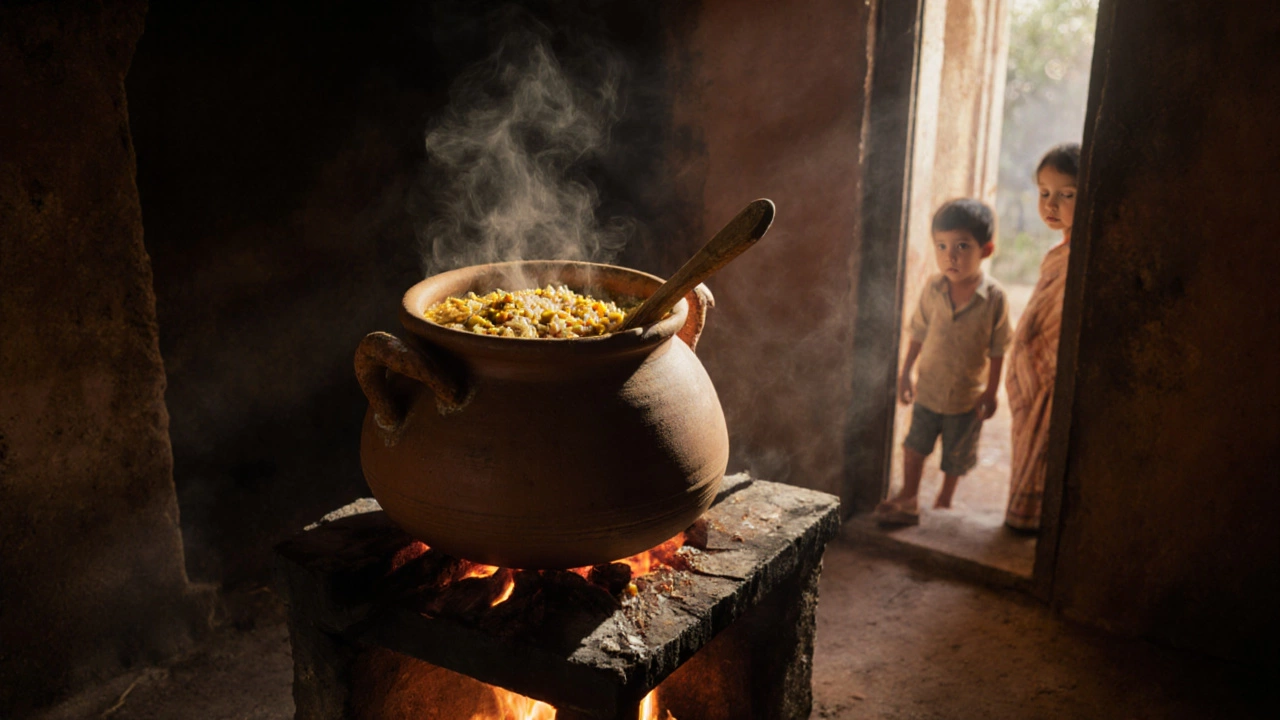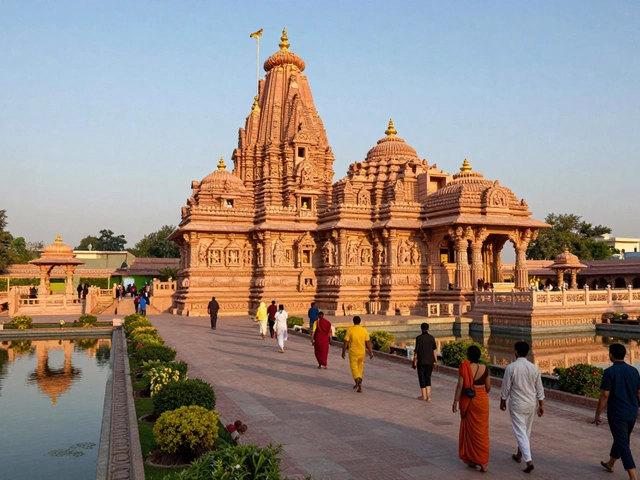India's Food Diversity Calculator
Which Indian dish better represents the country?
Select two dishes to compare their cultural significance and regional representation.
Diversity Comparison
Biryani
Aromatic rice dish with meat or vegetables, popular across India but particularly associated with Mughal and South Indian traditions. Not eaten daily by most Indians.
Khichdi
Simple rice and lentil dish eaten across India as comfort food, baby food, and temple prasad. Found in every region with local variations.
Why this matters
India has no official national dish because its food culture is too diverse to be represented by any single dish. While Khichdi is the most widely consumed across the country, each dish reflects a different aspect of Indian culture.
The truth about Indian food
The article explains that India has 29 states, 8 union territories, over 1,600 languages, and hundreds of distinct food traditions. No single dish can represent all of this diversity.
Ask someone what India’s national dish is, and you’ll get a dozen different answers. Butter chicken? Biryani? Chole bhature? Dal tadka? The truth is, India doesn’t have one. Not officially. Not legally. Not even by consensus. But that doesn’t mean the question doesn’t matter. In fact, it’s one of the most revealing things you can ask about Indian culture.
Why India Doesn’t Have a National Dish
India isn’t a single kitchen. It’s 29 states, 8 union territories, over 1,600 languages, and hundreds of distinct food traditions. What’s comfort food in Punjab is festival food in Kerala and everyday lunch in Bihar. The idea of picking one dish to represent all of that is like picking one song to represent all of Western music.
The Indian government has never declared a national dish. In 2015, when a petition asked the Ministry of Culture to name one, the official reply was blunt: "There is no such thing as a national dish of India." That response wasn’t evasive-it was accurate. To pick one would erase the diversity that makes Indian food so powerful.
What People Say Is the National Dish (And Why They’re Wrong)
Most tourists and even many Indians will say biryani. And it’s easy to see why. Biryani is rich, layered, aromatic, and found from Kashmir to Kanyakumari. Hyderabadi biryani with its saffron-soaked rice and slow-cooked meat. Kolkata biryani with boiled eggs and potatoes. Sindhi biryani with a sweet-sour twist. Each version tells a different story-of Mughal courts, colonial trade routes, and regional ingenuity.
But biryani isn’t universal. In rural Odisha, rice with lentils and greens is the daily staple. In the Northeast, fermented soybeans and smoked pork dominate. In Tamil Nadu, rice and sambar is breakfast, lunch, and dinner. Biryani is celebratory. It’s not everyday food for most Indians.
Then there’s khichdi. Simple. Humble. Made of rice and lentils, cooked with turmeric and ghee. It’s the first solid food given to babies. It’s what you eat when you’re sick. It’s served in temples as prasad. It’s the one dish you’ll find in every Indian home, from Mumbai high-rises to Himalayan villages. And yet, few outsiders know its name.

Khichdi: The Real Unofficial National Dish
If you had to pick one dish that represents the soul of Indian food, it’s khichdi. Not because it’s fancy. But because it’s everywhere. It’s the common thread.
It’s made with whatever rice and lentils are available-mung beans in the south, masoor dal in the north, chana dal in the west. It’s cooked with minimal spices, often just cumin, turmeric, and a pinch of asafoetida. No fancy techniques. No expensive ingredients. Just heat, time, and patience.
Khichdi is the food of resilience. During famines, it kept people alive. During lockdowns in 2020, it was the go-to meal for millions who couldn’t shop for complex ingredients. In Ayurveda, it’s called "the perfect food"-easy to digest, balancing all three doshas. Even the royal kitchens of Jaipur served khichdi daily as a reminder of simplicity.
It’s not glamorous. But that’s the point. While biryani shows off, khichdi sustains.
Other Strong Contenders-and What They Reveal
Let’s look at a few other dishes people argue about, and what they say about India’s regions.
- Chaat-street food royalty. Tangy, spicy, crunchy. Found in Delhi, Lucknow, Varanasi. Represents the chaos and energy of urban India.
- Dal makhani-creamy black lentils slow-cooked for hours. A Punjabi staple. Shows how dairy and butter became central to North Indian cuisine after the Green Revolution.
- Idli-dosa-steamed rice cakes and fermented crepes. South Indian breakfast icons. Prove how fermentation, not meat or dairy, shaped much of India’s food science.
- Pani puri-crispy shells filled with spiced water, potatoes, chickpeas. Eaten by kids and CEOs alike. The only dish that crosses class, religion, and language barriers without compromise.
Each of these dishes is a cultural artifact. Not a symbol of the whole country-but a window into a part of it.

What This Means for Travelers
If you’re visiting India and you want to understand its food, don’t look for the national dish. Look for the local one.
In Rajasthan, try dal baati churma-hard wheat balls dipped in ghee, served with spiced lentils. In Assam, eat khar-a traditional alkaline dish made from banana ash. In Goa, fish curry with rice isn’t just a meal-it’s a Portuguese-Indian hybrid born from 450 years of colonial history.
Food in India isn’t about uniformity. It’s about context. A dish means something different in a temple courtyard than it does in a Mumbai chawl or a Himachal farmhouse. The more you eat, the more you realize: there’s no single plate that represents India. There are thousands.
Why the Question Still Matters
Even though India has no official national dish, the question persists because it’s not really about food. It’s about identity. People want to simplify India-to fit it into a box they can understand. But India refuses to be boxed.
That’s why khichdi, despite its simplicity, is the closest thing to a national symbol. It doesn’t demand attention. It doesn’t shout. It just is. It feeds everyone, everywhere. No one owns it. No one claims it as theirs alone. And that’s exactly what makes it Indian.
Next time you’re in India, skip the touristy biryani restaurants. Find a local home, a street vendor, a temple kitchen. Ask what they eat every day. That’s your answer.
Is biryani India’s national dish?
No, biryani is not India’s national dish. While it’s popular and widely loved, especially in cities and during celebrations, it’s not eaten daily by most Indians. The Indian government has never declared any dish as the national dish. Biryani is one of many regional specialties, not a unifying national symbol.
Why doesn’t India have a national dish?
India has no national dish because its food culture is too diverse. With over 29 states, hundreds of languages, and countless regional traditions, no single dish can represent all of India. The government officially stated in 2015 that there is no such thing as a national dish, recognizing that diversity is part of India’s identity.
What is khichdi and why is it important?
Khichdi is a simple dish made of rice and lentils, cooked with turmeric and mild spices. It’s eaten across India, from homes to temples, and is often the first food given to babies or the go-to meal when someone is sick. It’s considered the most universal Indian dish because it’s affordable, nutritious, and adaptable to every region’s ingredients.
Is curry India’s national dish?
"Curry" isn’t an Indian word or dish-it’s a British colonial term used to describe any spiced stew. India has no single curry. There are hundreds: sambar in the south, kadhi in the north, jhol in Bengal. Calling any one "curry" the national dish is misleading and oversimplifies India’s culinary depth.
What should I eat if I want to experience authentic Indian food?
Don’t look for one dish. Look for local specialties. In the north, try dal baati churma. In the south, eat idli with coconut chutney. In the east, have macher jhol (fish curry). In the west, try pav bhaji. The best way to understand Indian food is to eat what locals eat every day-not what’s on tourist menus.







